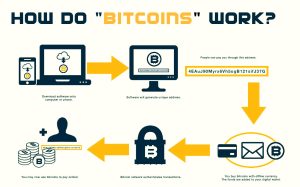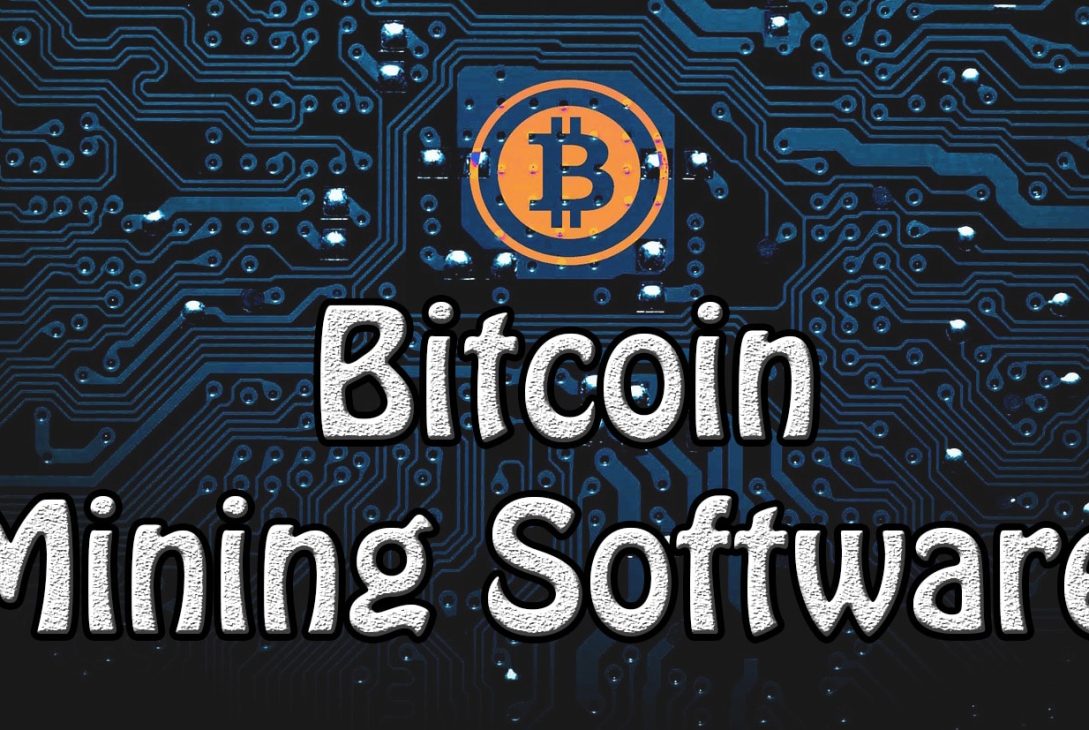Introduction
Welcome to the world of Bitcoin mining and blockchain technology! As digital currency continues to gain popularity as well as mainstream acceptance, it is very important to have a good understanding about how it works and how you can get involved. This blog will take on Bitcoin Mining and Blockchain Technology in depth, from its history and rise to prominence, to technical aspects of mining and economics behind it. Whether you are a beginner seeking more information about this industry or an expert looking for new insights, this article is your starting point. Therefore, let’s delve into the Beginner’s Blueprint of Bitcoin Mining and Blockchain Tech.
Introduction to Bitcoin Mining and Blockchain Technology
Welcome to the world of Bitcoin mining and blockchain technology! In recent years, these two terms have become increasingly popular, and for good reason. The first decentralized digital currency called Bitcoin has taken financial markets by storm while blockchain technology has been recognized as revolutionary innovation which could disrupt various industries at once. However, what does bitcoin mining mean? And do we understand what they’ve got in common? Why bother about both of them? In this chapter we will look at the basics of bitcoin mining as well as blockchain technology that will provide you with a strong foundation in cryptocurrency.
What is Bitcoin Mining?
Bitcoin mining refers to the process of creating new bitcoins through solving complex mathematical problems using specialized computer hardware. All bitcoin transactions are recorded directly into a digital ledger known as a block chain whereby these equations form part of it. Miners compete against one another by solving these equations in order to add new blocks of transactions onto the block chain; thus they get rewarded with some bitcoins for doing so. That is how new bitcoins are created which then become part of circulation.
What is Blockchain Technology?
Blockchain technology is basically used in developing other cryptocurrencies besides Bitcoin. It serves as a decentralized secure public record keeping system for all transactions made digitally hence making it transparent enough for everyone viewing it online to see any activities taking place. The block chain is maintained by a network of computers called nodes, which validate and record transactions. Each block in the blockchain contains a cryptographic hash of the previous block, forming a continuous sequence that cannot be altered or tampered with. This ensures that the blockchain system is secure and immune to any form of malice.
How Do They Work Together?
Bitcoin mining works alongside blockchain technology. Miners validate and record transactions on the blockchain using their computing power while the latter provides security for such transactions. Without miners, there would be no functioning blockchain; conversely, if one lacks the ledger system miners would not verify nor record any happenings concerning these bitcoins in the market. Bitcoin mining creates new bitcoins, while blockchain technology ensures that Bitcoin network remains safe as well as its integrity.
Why It Is Important To Understand Both?
For one who is thinking of entering into cryptocurrency, it is important to understand Bitcoin mining and the blockchain. Bitcoin mining involves more than just creating new bitcoins; it is also about maintaining the integrity and security of the blockchain. Likewise, blockchain technology ought not only to be seen as transactions recording, but as an economic and technological issue that ensues from decentralization. With this understanding, you will make better decisions and navigate through these complex waters more effectively.
In Conclusion:
In this chapter we have been able to lay some foundations for bitcoin mining and blockchains. We have described what they are, how they are interrelated and why it is important to grasp both sides. In the next chapter we will take a closer look at the history of Bitcoin starting from its initiation until when it became a buzz word so that you can get a feel for where this cutting-edge digital currency came from and how it has evolved over time. Keep reading to get additional insights on our beginners’ guide to Bitcoin Mining & Blockchain Technology.
History of Bitcoin and Its Rise to Prominence
Since its establishment in 2009, the world’s first decentralized digital currency, Bitcoin has taken over the globe like a storm. This monetary innovation was created by an unknown person called Satoshi Nakamoto. It changed the way we understand money and transactions, as well as financial systems. But how did this revolutionary technology come into existence and how has it evolved over the years? In this chapter, we will delve into the history of Bitcoin and its rise to prominence in the world of finance and technology.
The Origins of Bitcoin:
In 2008, Satoshi Nakamoto published a whitepaper titled “Bitcoin: A Peer-to-Peer Electronic Cash System”. This paper outlined a vision for a digital currency that would not require intermediaries like banks or governments to process payments. The document was written as a direct response to the global economic crisis that occurred in the year 2008 which exposed major weaknesses in traditional financial systems thus pushing for an alternative option.
Key Milestones in Its Growth and Adoption:
In 2009, Satoshi Nakamoto conducted his first transaction using Bitcoins with Hal Finney who was also a computer programmer. That is where Bitcoin started its journey to become a common method of payment worldwide. In that very same year, there were established platforms where bitcoin users could trade their bitcoins with traditional currencies such US dollars at bitcoinmarket.com.
It wasn’t until 2010 when bitcoin became known as means of exchange for tangible goods on online platform when Laszlo Hanyecz purchased two pizzas from another programmer with just 10000 bitcoins. This event is now generally referred to as “Bitcoin Pizza Day” which is celebrated every May 22nd by crypto enthusiasts all over the world.
Silk Road; an underground online market place became one of those who started accepting Bitcoins as mode of payment thereby attracting more people into these virtual coins but it also had some consequent negative consequences for the digital currency that led to its devaluation due to its association with illegal activities.
This surge was experienced in 2013 and it peaked at $1, 242 which is still an all-time high; this is mainly because of increased media coverage as well as investor interest in the cryptocurrency.
Coincidentally, the first major hack on a Bitcoin exchange Mt. Gox took place in The year 2014. At least 850000 Bitcoins were stolen hence resulting to a sharp decline of value in Bitcoin are there issues regarding security?
Notwithstanding, Bitcoin kept on gaining ground and by 2017, its worth had reached a record peak of $20,000 primarily driven by institutional investors who also saw major exchanges offering bitcoin futures contracts they could trade.
How It Has Evolved Over the Years:
Scalability has been one of the main issues addressed in the development of Bitcoin over time. In its early days, network capacity was limited to several transactions per second but when SegWit (Segregated Witness) upgrade happened in mid-2017, the network’s capacity rose tremendously.
A key development was creation of alternative cryptocurrencies known as altcoins which utilize similar technology like Bitcoin but with distinct properties and uses. Examples include Ethereum, Litecoin and Ripple among others.
Blockchain technology, however, has developed as a result of bitcoin’s rise. It is the technology that underlies Bitcoin. Blockchain is a digital ledger which is decentralized and records transactions in an open and secure way. Cryptocurrencies are not the only uses of it; for instance, supply chain management, voting system or digital identification verification.
Over the years, Bitcoin has become more acceptable to mainstream companies like Microsoft, PayPal and Tesla who now accept bitcoin payments. Consequently, its value has gone up further and solidified it as a legitimate asset class.
Conclusion:
From an unpretentious start in 2009 to its current status as a global game changer Bitcoin has come far. Milestones were reached; challenges emerged with controversies but this currency continued on its journey of success and development. With each passing day more people are embracing Bitcoins and blockchain technology hence very bright future is waiting for this revolutionary digital cash.
How Does Bitcoin Mining Work?

Bitcoin mining is an integral part of the operation of the Bitcoin network. It’s how new bitcoins are created and how transactions are verified and added to the blockchain. In this chapter, we will discuss basics of mining and miners in the Bitcoin network and verification for transactional records before adding them to the blockchain.
The Basics of Mining:
Mining entails using computer power to crack complicated math’s puzzles that serve as a proof of work to verify payments made on the internet by miners called “hashers”. Miners compete with each other through problem solving processes where they use computing power (CP). The first miner to solve these problems gets some newly minted bitcoin.
The Role of Miners in the Bitcoin Network:
In addition, miners play a vital function within Bitcoin network. They confirm all transactions and append them into blockchain, which is essentially a public book which contains all Bitcoins’ activities. This makes sure that there is no double spending of bitcoins and thus ensures security for the system. Besides, it helps decentralize the whole model by ensuring none has majority shares or control over handling any activity that takes place within such networks.
The Process of Verifying Transactions and Adding Them to the Blockchain:
A transaction on Bitcoin network is distributed throughout all nodes in this system. The cryptographic puzzle solved confirms whether this transaction was okay or otherwise. Once complete, this block shall be appended onto many others available in such chains of blocks making up blockchain showing different transactions approved on their networks. Successful resolution earns miner new bitcoins plus transaction fees.
As more people transact across bitcoin ledger, it becomes even harder for minors who try solving these cryptic puzzles since they become complex too. This is done in order not only maintain constant rate at which coins are produced but also ensure stability within systems.
To mine successfully one needs a strong computer with specific software needed for mining plus access to low cost electricity supply. The chance that they will succeed is higher when they have more computer power.
Conclusion:
Bitcoin mining is a vital process in the operation of Bitcoin network. It verifies transactions and adds them to blockchain, ensuring the security and decentralization of the network. The basics of mining and miners’ functions within the system are important to anyone interested in Bitcoin although it might appear complex. In the following chapter, we will address requirements for hardware and software, types of mining like solo or pool mining.
Mining Hardware and Software Requirements
Bitcoin mining is the process of validating transactions and adding them to the Bitcoin blockchain, which is a public register of all bitcoin transfers. For this to happen, there has to be some dedicated hardware as well as software in place. This will be the subject of discussion in this chapter.
What equipment do you need for mining?
The first most important thing that will be required for mining is a powerful computer. The power of your computer will determine how fast it can solve the complex maths problems used for mining. A desktop computer with high-end Graphics Processing Units (GPU), or an Application Specific Integrated Circuit (ASIC) miners are recommended. These gadgets are specially designed for mining activities hence they enhance it massively.
A great internet connection plus a Bitcoin wallet are also necessary other than just having a powerful computer.
Hardware Specifications Recommended:
Graphics card being the most crucial aspect when it comes to hardware, it should have more power so that it can be able to carry out calculations needed in carrying out mining faster. A minimum RAM memory of 4GB and graphics card with at least 6GB memory recommended . In terms of processor, you should have at least 2.5GHz multi-core processor.
One thing that needs mentioning here is that the cost of such hardware can be quite high particularly ASIC miners; therefore research on its potentials profitably before investing in expensive equipment has to be done.
Software Options Popular Among Miners:
There are numerous options available for individuals who wish to get involved in bitcoin mining since various tools exist each having its own set pros and cons. The most popular software used in Bitcoin Mining includes CGMiner which is command line based application running on Windows, Mac and Linux OSs Another common alternative is BFGMiner which operates similar to CGMiner but has a GUI interface making it easier to use.
EasyMiner could also work well for beginners due its simplicity and user friendly interface. Other software that is commonly used include MultiMiner, BitMinter and DiabloMiner. It is advisable to read a lot about them and choose the one that you find most appropriate for your mining purposes.
You should also consider joining a mining pool as well as installing software. This is where miners combine their efforts in order to improve their odds of solving the blockchain puzzle thereby earning the reward for it. For this reason, if you are a solo miner with less powerful hardware then joining a pool can increase your chances of earning bitcoins.
To sum up, Bitcoin mining involves specific hardware requirements and software components. One has to think through carefully on the costs as well as potential profits before purchasing equipment. With the right equipment and software, however, mining can be profitable but one needs to stay updated on changes taking place in Bitcoin Mining today since its landscape does not remain still indefinitely.
Types of Mining: Solo vs. Pool Mining
There are two main kinds of mining in Bitcoin mining: solo mining and pool mining. Both methods require the use of powerful computers to solve difficult math problems for the purpose of verifying and adding transactions to the Bitcoin blockchain. However, there are very distinct differences between these two approaches that miners must be aware of prior to choosing one.
The Difference Between Solo and Pool Mining:
Solo, as the name implies, entails an individual miner working alone to solve mathematical problems and earn a block reward. This means that the miner finds out what will work with full rewards. Conversely, pool mining involves a group of miners working together to resolve equations by bringing home part of a block reward.
Advantages and Disadvantages of Each:
When it comes to solo mining, a miner is completely in control over their operations. The rewards do not have to be divided among anyone else; they can all go straight into his or her own pocket. Nonetheless, this also means that he or she takes on all risks and costs associated with mining such as electricity expenses and cost of hardware.
However, for pool mining miners can contribute their resources so as increase the chances of solving the equations and then earning themselves the block reward. This makes it beneficial to them if they have no enough resources or no current access to advanced equipment used in mining. Nevertheless, with pooling also comes sharing meaning that each individual may receive lesser payout due its distribution amongst all members.
Which One is Better for Beginners?
Generally, beginners should prefer pool mining over solo ones because it does not entail technical knowledge like solo does but only limited resources are needed in order to join it. Moreover, this allows newbies joining these pools learn from experienced miners who formed them initially.
For advanced miners who possess more efficient machines at their disposal but still ready for high financial risks involved into such process – Solo would be more preferable option.
In conclusion:
In brief, solo and pool mining refer to two different ways of doing Bitcoin mining, each of which having its own set of pros and cons. While the former provides complete control as well as possibility for bigger gains, it is also more hazardous and costly. On the other hand, joining a mining pool has lower entry requirements and allows miners to learn from one another but also means that they will have to split the rewards with others. Therefore, it depends on personal choice and situation whether a person should go for solo or pool mining in the end.
The Economics of Bitcoin Mining
Bitcoin mining is a method through which people can make money off cryptocurrency. Nevertheless, it is not that straightforward and involves various factors that determine its profitability. The economics of bitcoin mining in this chapter involve the cost of mining, potential profits and determining your mining profitability.
The Cost of Mining and Potential Profits:
Bitcoin mining involves verifying blockchain transactions and adding them to the public ledger. This means solving complicated mathematical problems using specialized computer hardwares. However, as more participants join the network, these equations become harder hence requiring more expensive and powerful hardware.
It costs a lot to mine bitcoins because one has to invest initially on equipment like hardware , electricity used for running it as well as maintenance fees .One can spend anything between few hundreds or thousands depending on the kind of hardware used on mining. Moreover, electrical energy also plays a huge role by consuming a large part of what is mined during the process.Miners are usually found in nations where power accounts for half the overall expense.
On the other hand, potential profits from mining depend on several factors such as the current price of Bitcoin, how difficult it is to mine bitcoins and how efficient your miners are. As we have already noted above this paragraph ,mining’s potential profit changes with time especially when bitcoin prices change .When price rises then there will be more reward to those who are doing more work but if price falls then their efforts will bear no fruit at all.It is also important to look at Miner Difficulty because Having many miners increases difficulty thus making less profit.
Factors That Affect Profitability:
In addition to costs associated with mining and possible profits; there are other aspects that may affect profitability when it comes to bitcoins. Among them is electricity prices which must be considered before starting since electric bill may account for substantial expenditure as far as this business activity goes.
Another factor that matters in terms of money gained out of bitcoins’ extraction is how much power equipment will use in case it is put into operation. The more efficient the equipment, the less power it consumes and the higher profits are netted at the end of the day. Moreover, it is important to consider lifetime of a machine as well as its maintenance costs. The older versions become less lucrative for their owners due to emergence of new devices with improved operational performance.
Profitability can also be affected by where one mines bitcoins from. Some countries have cheaper electricity tariffs and favorable bitcoin mining regulations resulting in high returns-on-investment. However, mining in such places may still face certain challenges like bad weather or political instability.
How to Calculate Your Mining Profitability:
It is important to calculate your mining profitability before purchasing any mining hardware. There are several calculators available online that you can use to estimate how much money you would make given different factors such as power rates, mining difficulty and bitcoin price today.
To establish your profit from cryptocurrency take these factors into consideration; hash rate (the speed at which miners solve complex math problems), power consumption (the amount of electricity consumed by ASIC machines) and cost per kilowatt hour .Hash rate defines how fast a miner works which is usually measured in megahashes/second(MH/s) or gigahashes per second(GH/s). Power consumption on the other hand refers to amount of electricity consumed by equipment during its operations whereby this is gauged in terms of wattage/watts.
Once you can have these figures, you may make use of online calculators to guesstimate your possible profits. Bear in mind that these estimates are only rough calculations and do not represent the actual earnings you may obtain.
In conclusion, Bitcoin mining is a business that has potential for earnings, although one must be wise enough to analyze its economics well. The value of mining industry, profit variations and other factors may affect its viability. Therefore, it is important to research well and undertake proper computations before purchasing any mining equipment that would give profitable outcome.

Risks and Dangers in Bitcoin Mining
Bitcoin mining is a popular and money-spinning activity for many individuals and enterprises. The cryptocurrency market has seen more people seeking to get into the mining industry. However, Bitcoin mining is like any other investment where there are risks or challenges that need careful consideration before venturing. In this chapter, we will look at some of the potential traps and how to avoid them in order to have a successful mining experience.
Security Risks and How to Protect Yourself:
The largest peril of bitcoin mining lies in securing your digital wealth. As a miner you must secure your coin yourself which can be overwhelming. Bitcoins decentralized nature implies no central authority exists to protect your funds or reverse fraudulent transactions hence it is an attractive target for hackers as well as scammers.
It’s vital to use a secure wallet that has a good reputation where you store coins. Moreover, ensure that passwords are strong enough while making use of two-factor authentication so as to prevent unauthorized access. Also, back up your wallet regularly and keep it offline so that cyber-attacks can be minimized.
Potential Legal and Regulatory Challenges:
Bitcoin mining is still relatively new as an industry hence remains largely unregulated due to lack of any such regulation which could pose legal problems for miners. Cryptocurrency is treated differently by various countries with different laws therefore operators should take time understand these rules in order not find themselves on the wrong side of the law.
Moreover, governments may choose utilizing regulations on mining operations as the field further develops . It could encompass taxation, licensing along with other regulatory obligations . Therefore, for miners it’s important getting updated with all such changes within regulations so as they don’t face possible legal implications.
Other Risks To Consider Before Getting Into Mining:
In addition to security concerns and legal issues, there are other factors would-be Bitcoin miners should consider when planning their entry into this space. Such include equipment costs plus electricity expenses; competition level; and volatility in the cryptocurrency market.
Mining equipment can be expensive, and the electricity costs can quickly add up, especially for those with large mining operations. Additionally, with more and more people entering the mining game, the competition for block rewards becomes more challenging, making it harder to earn a profit. Moreover, the volatile nature of the cryptocurrency market can result in significant fluctuations in the value of Bitcoin, potentially affecting the profitability of mining.
Alternative Cryptocurrencies for Mining:
However well recognized bitcoin is as a digital currency, there are also other choices that one could opt to mine. These alternative coins called altcoins have less competition and may bring about substantial profits. Nonetheless they come along with their own risks like low liquidity and higher instances of being scammed.
Understanding Blockchain Technology Beyond Bitcoin:
To be a miner, one must have a good grasp of blockchain technology beyond Bitcoin. Bitcoin was the first and most well-known application of blockchain; however, there are many other things that can be done with this technology including smart contracts, supply chain management, and decentralized applications. As the field develops, miners who understand what it means will adjust to stay ahead.
In summary: Is Bitcoin Mining for You?
Bitcoin mining is an exciting and profitable venture but comes with its own set of risks and obstacles. Before venturing into mining it is important to carry out thorough research for awareness on possible risks involved. Through these difficulties, and taking necessary precautions miners may have successful and rewarding experiences in mining. Always remember to take caution in all dealings as you may only lose what you can afford to lose.
Alternative Cryptocurrencies to Mine
Among all the cryptocurrencies that are in existence today, Bitcoin stands out as the most popular and well-known among them. Though this is so, people who are interested in becoming miners have a variety of choices to make apart from Bitcoin. There are several other digital coins which can be mined known as altcoins that may offer potential returns on investment. In this chapter, we will look at some of the most common alternative cryptocurrencies for mining, besides Bitcoin; how they differ from Bitcoin; and what benefits and drawbacks mining these cryptos has.
Popular Cryptocurrencies for Mining Aside From Bitcoin:
Ethereum is one of the most popular alternatives for mining cryptocurrency. Ethereum was launched in 2015 and it is currently ranked second among all cryptocurrencies globally based on market capitalization after bitcoin. Unlike bitcoin that uses a proof-of-work (PoW) algorithm, Ethereum employs a proof-of-stake (PoS) algorithm making mining of ethereum easier and more energy efficient than bitcoin. Other popular ones include litecoin, dogecoin and monero.
How They Differ from Bitcoin:
One major difference between Bitcoin and its alternatives lies in algorithms for mining used by each category. While Bitcoin uses PoW algorithm, many of these Altcoins utilize either PoS or hybrid Pow/Pos algorithms. Consequently, process of mining these coins can be less energy demanding and easy to embark on for beginners Moreover these altcoins have different block sizes transaction speeds among other technical features from bitcoin.
Potential Advantages and Disadvantages of Mining Alternative Coins:
Mining alternative coins might yield higher profits than with bitcoins since their value could still appreciate further since they are still at an early stage unlike bitcoins whose price has already grown significantly. Additionally due to reduced competition associated with mining such coins, there may also be greater returns Nonetheless there are certain risks too that should not be overlooked: These altcoins tend to be more unstable hence riskier for mining, as they have highly volatile value and popularity. Also, they may be lacking the same level of acceptance and adoption like bitcoin which could affect their life span.
Conclusion:
While Bitcoin remains the most popular and dominant cryptocurrency, there are many other alternative coins that can be mined for potential profits. These altcoins are appealing to miners because of their different features as well as algorithms. However, mining these currencies has its own risks and difficulties. Just like any other investment it is important to do a proper research and consider all factors before starting to mine for alternative cryptocurrencies.
Understanding Blockchain Technology Beyond Bitcoin
Blockchain technology has been getting a lot of attention in recent years because of its association with the popular cryptocurrency, Bitcoin. Nonetheless, this technology can turn around not only the financial industry but many other industries too. In this chapter, we will discuss blockchain technology beyond bitcoin and explain its applications, potential for disruption and innovation as well as ways to stay up-to-date with the latest developments.
Applications of Blockchain Technology in Various Industries:
Although bitcoin was the first blockchain application, it has far more potential than just digital currencies. Essentially, blockchain is a decentralized ledger which ensures secure and transparent way of recording and storing data. Hence it can be applied in a variety of sectors including supply chain management, healthcare, real estate to even voting systems. For example, at supply chain management level, it enables tracking the journey of products from source to end consumer making sure that there is transparency and authenticity behind them. When it comes to healthcare on the other hand; blockchain provides secure storage for patient information making it easier to share between healthcare providers thereby enhancing efficiency as well as accuracy.
Potential for Disruption and Innovation:
Since transactions using blockchain do not need intermediaries who slow down deals or are expensive to maintain or offer security; they make activities quicker cheaper safer etc.. The traditional sectors are likely to be disrupted while new business models come into being because of this thing. For instance, smart contracts based on blockchains can streamline processes hence reducing reliance on lawyers during legal transactions Periodic crowdfunding platforms have also emerged based on blockchains that bypass traditional banking systems thus providing start-ups with access to capital easily . We have barely scratched the surface about what blockchain technology can achieve because there are limitless possibilities for innovation.
How to Stay Updated on the Latest Developments in Blockchain Technology:
The fast evolving nature of technological advancements necessitates keeping abreast with emerging trends in blockchain technology. One could follow industry experts and thought leaders through social media platforms like Twitter or attend blockchain-related conferences and events. Other online resources such as blogs, podcasts and online courses can also provide an avenue for you to stay informed. Joining online communities and forums is another way of discussing ideas with people who think like you.
To summarize, the blockchain technology has a potential of being disruptive in various industries beyond cryptocurrency alone. It has many applications and unlimited growth possibilities. For a beginner, grasping its essence means having knowledge on how it works and staying updated on its latest developments so as to realize its full potential. By acquiring right skills and information sources, one can be at the forefront of this revolution that is empowering the world through blockchain technology.
Conclusion: Should You be Mining Bitcoin?
As we get to the end of our Beginner’s Blueprint on Bitcoin Mining and Blockchain Tech, let us take a moment to go over some things we have previously discussed. We started with an overview of what is bitcoin mining and blockchain technology by looking at the history of bitcoin and how it gained fame. We then went into the technical aspects of mining which included; how it works, hardware and software requirements. Different types of mining as well as its economics, risks and challenges were also mentioned. Finally, this was followed by addressing other cryptocurrencies for mining and expansion of blockchain technology beyond bitcoin.
So is bitcoin mining right for you? It is not a simple yes or no question. It depends on your unique situation as well as objectives in life. There are several factors that should cross your mind before jumping into mining.
Firstly, do you possess the necessary technical knowledge and skills? Mining requires some level of technological know-how plus knowledge about cryptocurrency markets too. If these terms are new to you, getting through the process will be harder.
Secondly, can you afford to buy equipment? As we talked about earlier in our discussion about block rewards halving process, mining can be very expensive because it takes time to recover what has been invested in buying machines used for this purpose. You need to put into consideration your financial muscle when it comes to such matters
Moreover, do you live in an area where electricity is cheap? This activity consumes large amounts of power hence costs incurred from electric bills can negatively affect your margins. In case electricity prices around are high, making money through this method may not make sense.
Do you have sufficient time and persistence required for monitoring and maintaining your mine operation? Mining does not happen overnight; there are many things that need constant checking up so at they can function optimally till eternity if possible. For those who cannot stay around all day watching their gadgets or lack enough time to do anything else beyond mining, they should definitely reconsider their decision.
In summary, while bitcoin mining can provide you with an income stream and be thrilling, it is not for all. This method demands a lot in terms of time, money and power; thus has its own risks and difficulties. Before making any decisions on joining the mining circle, please take into account the facts listed above.
In order to lower the costs and reduce risks, beginners are advised to start small by engaging in artisanal mining or joining a mining pool. Depending on your experience and knowledge gained from this type of business, you will then decide if you need to expand it further.
Ultimately whether or not one mines bitcoin is based off personal goals and circumstances. We hope this Beginner’s Blueprint on Bitcoin Mining has given you a good understanding of how bitcoin works as well as blockchain technology in general, and we wish you luck with your future endeavors in mining bitcoins.
Conclusion
As I delved into the world of Bitcoin mining, and blockchain technology, it became clear that this industry is evolving continuously and has potential to define the future of finance and technology. In this beginner’s blueprint, we have discussed basics of bitcoin mining as well as its underlying technology, along with its history and economics. Now let us take a step back and think about what we learned.
Firstly, it is important for readers to understand that Bitcoin mining doesn’t produce immediate returns. It requires significant time, money and resources investment. Just like any other investment there are risks involved hence it is necessary to do extensive research before getting into such business.
One of the main points highlighted in this guide was the significance of hardware and software requirements in mining. The more advanced the technology gets so does it become difficult for miners to keep pace with it. It is therefore crucial for them to have appropriate machines as well as applications if they want to stay competitive in such a market.
We also explained solo versus pool mining in our lessons on Bitcoin mining. Even though solo-mining gives you more control over your earnings and transaction processes, pool-mining offers steadier income but may require sharing rewards with others involved.
Moreover, one should not forget that Bitcoin Mining is an Economic Activity too. From cost of electricity to volatility of Bitcoin prices; many other factors can influence profitability from this activity. This means these must be carefully considered before acquiring any mining equipment.
Additionally there are alternative cryptocurrencies apart from Bitcoin which can be mined all you need is just a little bit more research on each option before deciding on which one will serve your purpose best in terms of Ethereum or Zcash or Monero
Lastly we have explored more about blockchain technology that goes beyond just Bitcoins by way of illustration: As industries adopt Blockchain technologies it becomes apparent that Finance 2 Supply Chain Management could well be disrupted by DLTs
In conclusion, bitcoin mining along with blockchain technology provide an excellent investment opportunity for those who are ready to commit their time, money, and resources. Nonetheless, it is important to first learn about the various risks and challenges associated with this venture and also conduct a thorough research before venturing into it. Whether or not bitcoin mining is right for you will depend on your goals, resources, and risk tolerance. This industry keeps changing; hence it is essential to keep oneself informed and adjust to new developments as they come up. Thanks for joining us in this exploration through the world of Bitcoin mining and blockchain technology!










